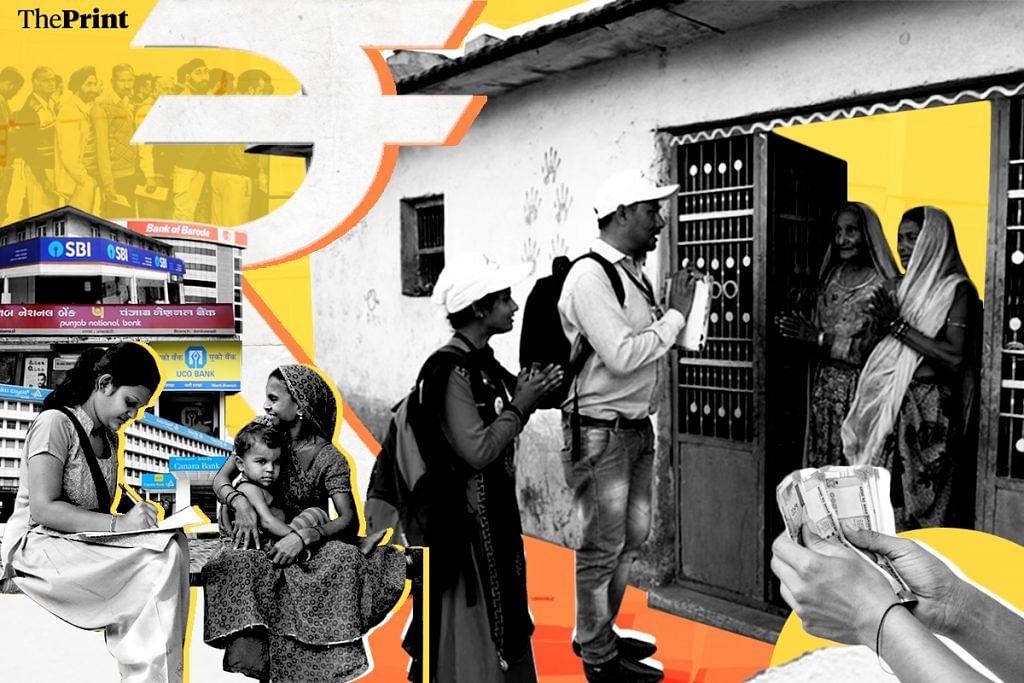Government surveys are crucial for policymaking. They are typically large scale, nationally representative surveys, conducted with the objective of understanding how people of the country are faring in various aspects of their lives, what their needs, demands and aspirations are, how businesses, small and big, and the overall economy is doing, at large.
In 2021, NITI Aayog compiled an inventory of all-India surveys and found that Indian Government has been conducting surveys across a diverse set of themes, ranging from health, labour and employment to agriculture and demographic profile, etc.
Measuring and tracking key indicators through relevant and timely data collection is at the heart of evidence-based policymaking. One such area of data collection that the government is actively engaged in pertains to understanding households’ financial lives.
Very simply put, building a picture of a household’s financial life refers to understanding how households borrow, save, spend, invest and manage their risks. It also refers to understanding the level of engagement households have with formal and informal sources of finance, and factors that influence households’ financial decision-making. These factors include socio-economic context (location of residence, education, income levels, and occupational profiles), financial capability in terms of their financial knowledge, and access to financial services.
It is commendable that the government has developed several datasets towards building an understanding of households’ financial lives and their financial profile. However, there is a need to update and expand the scope of data collection, so that the work by government in this regard can be further strengthened. Here’s a list of areas where further thinking and action is needed.
Also read: Why financial service providers, policy makers must evolve to better serve low-income households
Need for an updated dataset on households’ consumption pattern
The household consumption expenditure survey made available by the National Sample Survey Office (NSSO) was last conducted in 2011-12, with the government deciding to do away with the 2017-18 round of survey due to data quality issues. This has left a gnawing gap in understanding household’s consumption pattern.
An important utility of the consumption expenditure survey is the estimates of monthly per capita expenditure that it generates, which, among other things, is used to identify poverty levels in various parts of the country.
In the absence of this dataset, noted academicians and policy experts have used alternate datasets and proxies to estimate the poverty rate leading to conflicting narratives about poverty head count rate of India. The survey is also used to develop an understanding of the proportion in which households spend across various components, such as food and non-food items, durable goods, etc. and how these proportions vary by income groups. Information such as this can help government understand if nutritional and other basic needs of households are being met and whether there is a need for government intervention or support.
The government has already announced the launch of the consumption expenditure survey for the year 2022-23, which is a step in the right direction. However, there is a need for timely release of datasets such as these for greater transparency and appropriate policy making.
Increasing the frequency of surveys that build evidence on households’ balance sheet
The All-India Debt and Investment Survey conducted by the NSSO provides a holistic picture of the assets that households own, both in the form of physical and financial assets, and the loans they incur from formal and informal sources. The survey can further add value by focusing on increasing the frequency to a minimum of five years, compared to the current frequency of once every 10 years. The formal financial landscape is changing rapidly and to understand how households are responding to this change, a higher frequency of this dataset is the need of the hour.
Similarly, NABARD’s All India Rural Financial Inclusion Survey (NAFIS) provides rich, in-depth information about not just rural household’s financial profile but also their attitude towards money management, and their level of financial knowledge. The NAFIS was released as a one-time survey in 2018. However, it will be useful to track the same set of households surveyed in the last round through follow-up rounds, once every three years.
The context in which rural households operate is vastly different and therefore a survey such as NAFIS can become a regular occurrence instead of a one-time survey. This will help researchers and policymakers evaluate the effect of financial sector innovation and financial inclusion efforts on the lives of rural households.
Collecting data on financial well-being
While all the datasets described above capture one or more aspects of households’ financial lives, there is little or no data or evidence on how access to various financial services is impacting lives of the people.
A direct and straightforward way to think about this impact is through the lens of financial well-being, which is about people’s ability to meet their current and future financial obligations. Collecting such data of households can help in making meaningful assessments regarding the relationship between access to finance (both formal and informal) and financial well-being, as well as other non-financial factors that drive positive financial health.
Broadly, the financial well-being framework could include questions pertaining to household’s ability to: (i) manage day-to-day finances; (ii) ability to manage and recover from shocks; (iii) raise lumpsums for an emergency; and (iv) plan for medium and long-term goals. Government will benefit from adding these questions, particularly in the surveys listed in this article, so that financial well-being of citizens can be measured and tracked over a period.
Misha Sharma is Practice Head, Household Finance, Dvara Research.
The article is part of our series of financial explainers in partnership with Dvara Research.
Views are personal.
Also read: Suitable or unsuitable? Understanding the role of credit in finances of low-income households
